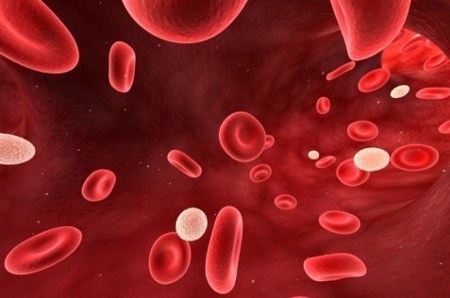Top 10 Conditions Caused by Bad Diet
1 Comments
What You Should Know
There is a direct relationship between diet and health as exemplified in the saying, you are what you eat. Poor nutrition and consuming excessive amounts of unhealthy foods weaken the body and lead to poor health. Bad diet contributes to several medical conditions. Photo: Getty Images

Obesity
The incidence of obesity increases each year among children and adults in the United States and is considered to be a global epidemic by the World Health Organization. The consumption of energy-dense, nutrient-poor foods with high levels of sugar and saturated fat combined with reduced physical activity leads to obesity. Photo: Getty Images

Cardiovascular Disease
Cardiovascular disease is the leading cause of death in the United States. Many deaths from this condition are preventable by taking action on the major primary risk factors of unhealthy diet, physical inactivity and smoking. A diet high in saturated fats and trans fats contributes to the development of heart disease. Photo: Getty Images

Type 2 Diabetes
Type 2 diabetes, which is the most common form of diabetes, usually occurs gradually. Overweight individuals are more likely to develop insulin resistance because fat interferes with the body’s ability to use insulin. Family history and genetics impact the risk for developing this condition. However, poor diet, physical inactivity and excessive body weight, especially at the waist, increase the risk of type 2 diabetes. Photo: Getty Images

High Cholesterol
Diets high in saturated fat, trans fat and cholesterol lead to high serum cholesterol levels. People with high cholesterol increase their risk for a stroke. Excessive amounts of low-density lipoprotein or LDL accumulate slowly on the walls lining the arteries that supply the heart and the brain. Photo: Getty Images

Atherosclerosis
Atherosclerosis refers to the accumulation of plaque or fat deposits in and on artery walls. Plaque buildup causes restricted blood flow through these important blood vessels which carry blood from the heart to the rest of the body. High cholesterol, often from too much cholesterol in the diet, is one risk factor for developing this condition. Aneurysms, heart attack, stroke and peripheral artery disease are complications of atherosclerosis. Photo: Getty Images

Hypertension
Hypertension is a common condition with many risk factors. Blood pressure is determined by the amount of blood the heart pumps and the amount of resistance to blood flow in the arteries. An increase in the amount of blood pumped by the heart and narrowing of the arteries causes a rise in blood pressure. Excessive alcohol use, too much salt and too little potassium in the diet are a few risk factors for developing hypertension. Photo: Getty Images

Gout
High levels of uric acid in the blood produce urate crystals which can accumulate around joints and cause inflammation and intense pain. This condition, known as gout, is linked to lifestyle risk factors, certain medications and family history. Excessive alcohol use and high levels of fat and cholesterol in the blood are two risk factors for developing gout. Photo: Getty Images

Iron-Deficiency Anemia
Anemia occurs when there is an insufficient amount of hemoglobin in the blood. Hemoglobin is the component in red blood cells that transports oxygen throughout the body. An iron deficiency is the most common cause of anemia. An iron-poor diet, blood loss and the body’s increased need for iron during pregnancy are factors that deplete the body’s iron reserve. Photo: Getty Images

Osteoporosis
Osteoporosis is a condition that can strike at any age and affects men and women. The bones become weak and are very susceptible to fractures. There are many risk factors that lead to bone loss. Some risk factors, such as gender, age, body size, ethnicity and family history, cannot be controlled. However, a diet low in calcium and vitamin D and excessive alcohol use are risk factors that can be controlled. Photo: Getty Images

Dental Cavities
Tooth decay is a common condition for children and adults. The cause of dental cavities is a combination of poor oral hygiene and diet. The bacteria, which are normally present in the mouth, convert food, especially starches and sugars, into acids. The acids, bacteria, food debris and saliva combine to form plaque which adheres to teeth within 20 minutes after eating. Tooth decay begins and flourishes if teeth are not properly and routinely brushed. Carbohydrates, sticky foods and frequent snacking increase the risk of tooth decay.
Sources:
World Health Organization:
Obesity and Overweight Cardiovascular Disease: Prevention & Control
Medlin Plus:
Type 2 Diabetes Dental Cavities
Mayo Clinic:
Arteriosclerosis/ Atherosclerosis, Gout, High Blood Pressure (Hypertension)
Cleveland Clinic:
Anemia
National Institute of Arthritis and Musculoskeletal and Skin Diseases:
What is Osteoporosis?
Article by Maryann Gromisch
Photo: Getty Images
Add a Comment1 Comments
I think the part about dental decay is so important! Many people don't realize just how important dental health is, and eating tons of sugary foods can definitely contribute to a lot of dental problems down the road.
November 18, 2010 - 11:15amWe try to help people understand this over at our dental blog.
This Comment